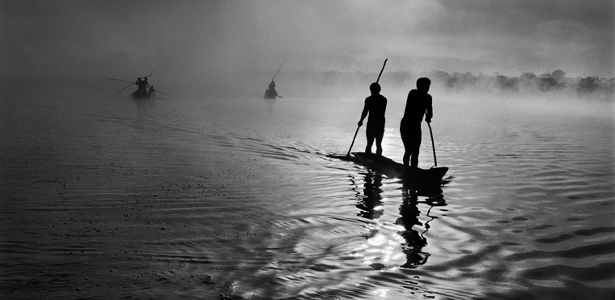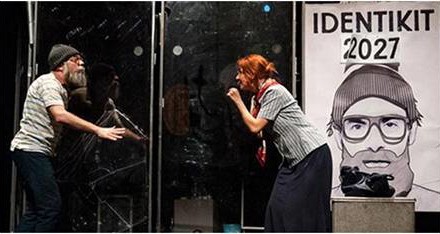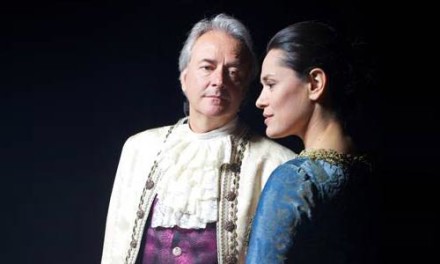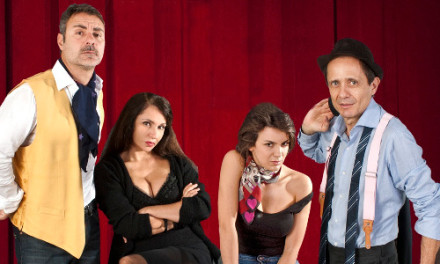Dal 15 maggio al 15 settembre 2013 al Museo dell’Ara Pacis sarà aperta al pubblico la mostra:
Genesi
Fotografie di Sebastião Salgado
Genesi è l’ultimo grande lavoro di Sebastião Salgado, il più importante fotografo documentario del nostro tempo: uno sguardo appassionato, teso a sottolineare la necessità di salvaguardare il nostro pianeta, di cambiare il nostro stile di vita, di assumere nuovi comportamenti più rispettosi della natura e di quanto ci circonda, di conquistare una nuova armonia.
Il mondo come era, il mondo come è; la terra come risorsa magnifica da contemplare, conoscere, amare. Questo è lo scopo e il valore dell’ultimo straordinario progetto di Sebastião Salgado.
In mostra oltre 200 fotografie eccezionali: dalle foreste tropicali dell’Amazzonia, del Congo, dell’Indonesia e della Nuova Guinea ai ghiacciai dell’Antartide, dalla taiga dell’Alaska ai deserti dell’America e dell’Africa fino ad arrivare alle montagne dell’America, del Cile e della Siberia. Genesi di Sebastão Salgado è un viaggio fotografico nei cinque continenti per documentare, con immagini in un bianco e nero di grande incanto, la rara bellezza del nostro principale patrimonio, unico e prezioso: il nostro pianeta.
Salgado ha realizzato le fotografie che saranno esposte all’Ara Pacis andando alla ricerca di quelle parti del mondo ancora incontaminate, di quei segmenti di vita ancora intatta, in cui il nostro pianeta appare ancora nella sua grandiosa bellezza e dove gli elementi, la terra, la flora, gli animali e l’uomo, vivono in un’armonia miracolosa, come in una perfetta sinfonia della natura. La mostra è suddivisa in cinque sezioni che ricalcano le zone geografiche in cui Salgado ha realizzato le fotografie: Il Pianeta Sud, I Santuari della Natura, l’Africa, Il grande Nord, l’Amazzonia e il Pantanàl e presenta una serie di grandiose fotografie di paesaggio realizzate con l’obiettivo di immortalare un mondo in cui natura, animali ed esseri viventi vivono ancora in equilibrio con l’ambiente.Un’altra parte del lavoromette insieme le fotografie che ritraggono animali, impressi nell’obiettivo di Salgado attraverso un lungo lavoro di immedesimazione con i loro habitat naturali. Il fotografo ha infatti vissuto nelle Galapagos tra tartarughe giganti, iguana e leoni marini, ha viaggiato tra le zebre e gli altri animali selvatici che attraversano il Kenya e la Tanzania, rispondendo al richiamo annuale della natura alla migrazione.
Viaggio unico alla scoperta del nostro ambiente, l’ultimo progetto di Salgadorappresenta il tentativo, perfettamente riuscito, di realizzare una sorta di grande antropologia planetaria. Ma è anche un grido di allarme per il nostro pianeta e un monito affinché si cerchi di preservare questo mondo ancora incontaminato, per far sì che nel tempo che viviamo, sviluppo non sia sinonimo di distruzione.
Orari: Da martedì a domenica ore 9.00 – 19.00 (l’ingresso è consentito fino alle 18.00) – chiuso il lunedì Biglietto solo mostra € 10 intero, €8 ridotto, €4 speciale scuola, € 22 speciale famiglie; Biglietto integrato museo/mostra: € 16 intero, € 12 ridotto Info: 060608 (tutti i giorni ore 9.00 – 21.00) Museo dell’Ara Pacis Lungotevere in Augusta – Roma // // //From May 15 to September 15 2013 at the Ara Pacis Museum will be open to the public the exhibition:
Genesis
Photographs by Sebastião Salgado
Genesis is the last great work of Sebastião Salgado, the most important documentary photographer of our time: a passionate look, tended to emphasize the need to protect our planet, to change our way of life, to acquire new behavior more respectful of nature and what surrounds us, to gain a new harmony.
The world as it was, the world as it is, and the earth as a magnificent resource to behold, know, love. This is the purpose and value of the last extraordinary project of Sebastião Salgado.
Showcasing over 200 unique photographs: the tropical forests of the Amazon, the Congo, Indonesia and New Guinea to the glaciers of Antarctica, from the taiga of Alaska to the deserts of Africa and up to the mountains of America, Chile and Siberia. Sebastão Salgado’s Genesis is a photographic journey across five continents to document with images in black and white of great charm, the rare beauty of our planet.
Salgado has produced the photographs that will be exhibited at the Ara Pacis, seeking out those parts of the world still untouched, those segments of life still intact, in which our planet is still in its magnificent beauty and where the elements, earth, flora, animals and humans live in miraculous harmony, as in a perfect symphony of nature. The exhibition is divided into five sections that follow the geographical areas in which Salgado has produced photographs: Planet South, The Shrines of Nature, Africa, the Far North, the Amazon and the Pantanal and has a number of great landscape photos made with the aim of capturing a world where nature, animals and living beings still live in balance with the environment. Another part of the work brings together the photographs of animals etched into the lens of Salgado through a long process of identification with their natural habitats. The photographer has been living in the Galapagos including giant tortoises, iguanas and sea lions, he traveled between the zebras and other wildlife that pass through Kenya and Tanzania, answering the call of nature to the annual migration.
Unique journey exploring our environment, Salgado’s latest project is an attempt, a complete success, to create a sort of grand planetary anthropology. But it is also a cry for help for our planet and a warning that we try to preserve this world still untouched, so that in the time we live in, development is not synonymous with destruction.
Opening hours: Tuesday to Sunday from 9:00 to 19:00 (entry is allowed until 18.00) – closed on Mondays Exhibition only: €10 adults, €8 reduced, €4 school special , families special €22 ; Integrated ticket (museum/exhibition): € 16 full, € 12 reduced Info: 060608 (every day from 9:00 to 21:00) Ara Pacis Museum Lungotevere in Augusta – Rome // // //




